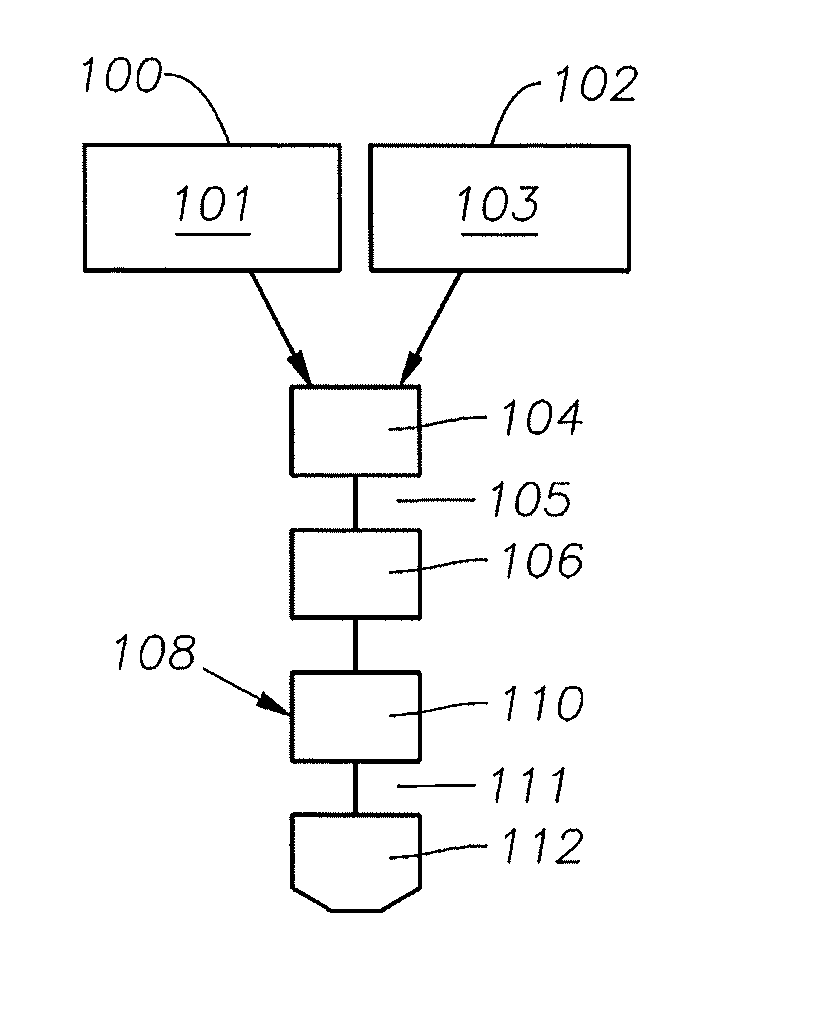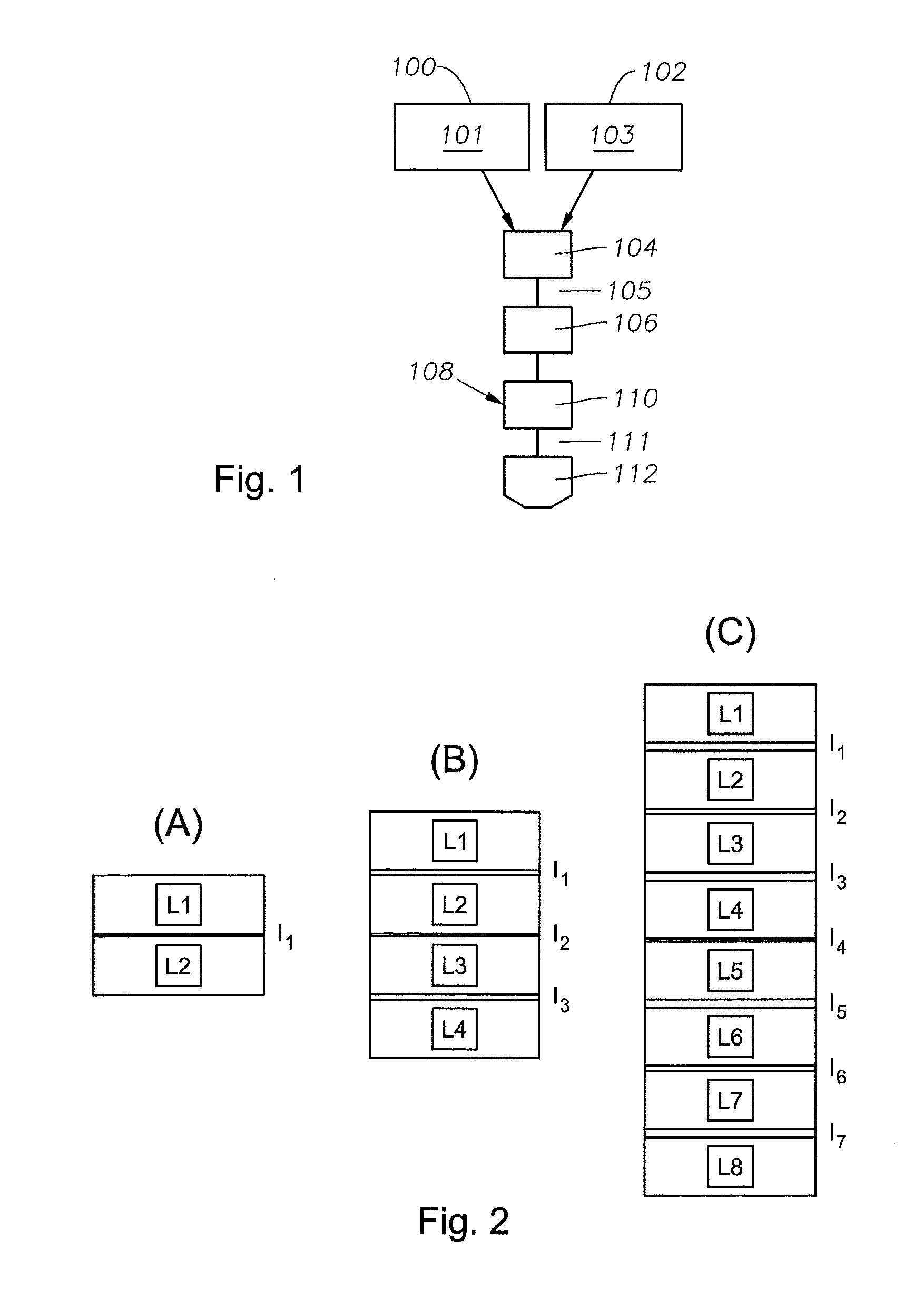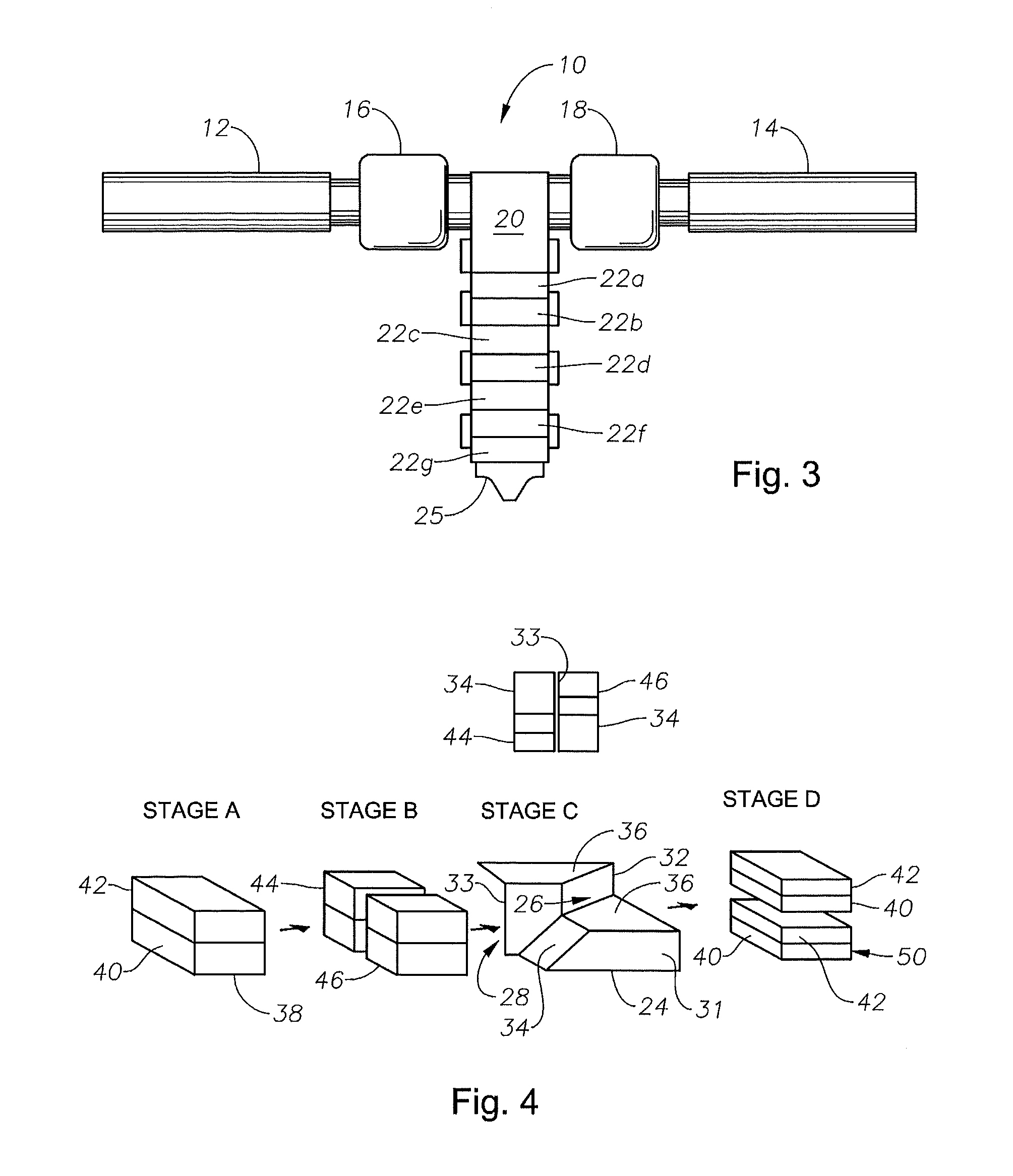Multilayer microporous film, process for production of the film, and use of the film
a microporous membrane, multi-layer technology, applied in the direction of cell components, cell component details, manufacturing tools, etc., can solve the problems of heat shrinkage, air permeability, puncture strength, heat loss, etc., and achieve the effect of reducing the permeability of the membran
- Summary
- Abstract
- Description
- Claims
- Application Information
AI Technical Summary
Benefits of technology
Problems solved by technology
Method used
Image
Examples
example 1
(1) Preparation of the First Mixture
[0129]A first mixture was prepared as follows. First, combine (a) 25.0 wt. % of polymethylpentene (Mitsui Chemicals, Inc. TPX: MX002) having an MFR of 21 dg / min and a Tm of 222° C. (the PMP), (b) 5.0 wt. % of isotactic PP having an Mw of 1.1×106 and a Tm of 163.8° C. (the PP), (c) 40.0 wt. % of PE having an Mw of 5.6×105 and a Tm of 134.0° C. (the PE1), and (d) 30.0 wt. % of PE having a Mw of 1.9×106 and a Tm of 136.0° C. (the PE2), the weight percent being based on the weight of the combined polymer.
[0130]Next, 25.0 wt. % of the combined polymer was charged into a strong-blending double-screw extruder having an inner diameter of 58 mm and L / D of 42, and 72.5 wt. % liquid paraffin (50 cst at 40° C.) is supplied to the double-screw extruder via a side feeder. Mixing is conducted at 220° C. and 200 rpm to produce the first mixture, the weight percent being based on the weight of the first mixture. The composition of the mixture and concentration are...
examples 2 and 3
[0135]Example 1 is repeated except as shown the first composition of the mixture in Table 1 to produce the final liquid-permiable multi-layer microporous membranes. The membrane's properties are shown in Table 2.
TABLE 1Solventconcentra-tionSolvrntThe first mixtureof the firstconcentration of(a)(b)(c)(d)mixtureliquid paraffinPMPPPPE1PE2(wt. %)(wt. %)wt. %wt. %wt. %wt. %Example 125752554030Example 2257520203030Example 327.572.530301030
TABLE 2Liquid-permeableLiquid-permeableLiquid-permeablemicrolayermicrolayermicrolayerMicrolayermembrane ofmembrane ofmembrane ofPropertiesExtrudateExample 1Example 2Example 3Thickness (μm)1.0 × 103404040Width (m)0.12.52.52.5Number of microlayers1024102410241024Microlayer thickness0.98≦0.040≦0.040≦0.040(μm)Normalized airn / a1000478213permeability(seconds / 100 cm3 / 20 μm)Porosity (%)n / a354156Normalized pin puncturen / a307278206strength (mN / 20 μm)Shutdown temperature *1n / a∘∘∘Meltdown temperature *2n / a∘∘∘Tensile strength *3n / a∘∘∘*1 ∘ means shutdown temperature i...
PUM
| Property | Measurement | Unit |
|---|---|---|
| Tm | aaaaa | aaaaa |
| diameters | aaaaa | aaaaa |
| thickness | aaaaa | aaaaa |
Abstract
Description
Claims
Application Information
 Login to View More
Login to View More - R&D
- Intellectual Property
- Life Sciences
- Materials
- Tech Scout
- Unparalleled Data Quality
- Higher Quality Content
- 60% Fewer Hallucinations
Browse by: Latest US Patents, China's latest patents, Technical Efficacy Thesaurus, Application Domain, Technology Topic, Popular Technical Reports.
© 2025 PatSnap. All rights reserved.Legal|Privacy policy|Modern Slavery Act Transparency Statement|Sitemap|About US| Contact US: help@patsnap.com



